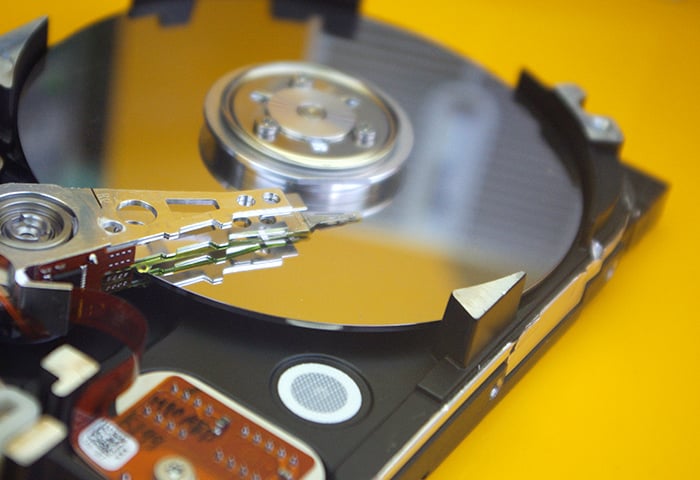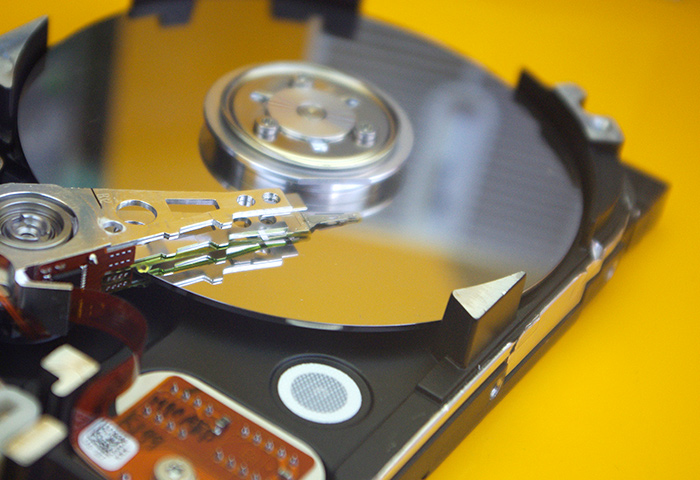To choose a partition for Windows 10 installation, select the partition with sufficient space and ensure that it is formatted correctly. Choosing the correct partition for Windows 10 installation is crucial to ensure the smooth functioning of your computer.
Before selecting a partition, it is imperative to check the available space on your system and choose the one with sufficient capacity. Additionally, the partition should be formatted correctly to ensure that it is compatible with the operating system. It is advisable to take a backup of your data before installation to avoid any potential data loss.
By following these simple steps, you can ensure that your Windows 10 installation process is hassle-free and seamless.
Why Partitioning Is Important For Windows 10 Optimization
Partitioning helps in better management of your computer space. When you install Windows 10, it will create a partition by default, but you can create more partitions based on your usage and needs. It can help you to organize your files, programs and applications in a better way, making it easier to find them. Additionally, it can also prevent you from accidentally deleting or modifying system files.
Understanding Partitioning
Partitioning refers to dividing your computer’s hard drive into several sections called partitions, with each partition functioning as a separate drive. These partitions can be used for different purposes, such as storing files, programs and operating system. It can also help to prevent the fragmentation of files, which can slow down the performance of your computer.
Benefits Of Partitioning For Windows 10 Optimization
| 1. | Partitioning can improve the performance of your PC by allowing you to keep the operating system separate from other files and programs. |
| 2. | It can also help you to recover from system issues or errors quickly. |
| 3. | If you have multiple operating systems, you can keep them on separate partitions and switch between them easily. |
By partitioning your hard drive, you can enhance the overall functionality of your computer as well as optimize Windows 10 performance.

Credit: www.avg.com
Preparing For Partitioning And Installation
Before partitioning and installing Windows 10, you need to prepare your system. Firstly, creating a backup is necessary to secure your data. Secondly, check your system requirements to ensure smooth installation. Thirdly, download Windows 10 ISO from Microsoft’s official website. Lastly, create an installation media such as a USB flash drive. The installation media can be used to reinstall or repair your operating system, in case of any problems. These steps will help you in choosing the proper partition to install Windows 10, making your system efficient and secure.
Choosing The Right Partition Table
Choosing the right partition table is crucial for installing Windows 10. There are two types of partition tables available – MBR and GPT. Understanding the differences between the two will help you select the suitable partition table for your configuration.
MBR is an older partition table and has a limit of 2TB per partition and a maximum of four primary partitions. In contrast, GPT is newer and can address up to 9.4 zettabytes in size, with the option of up to 128 partitions.
The type of partition table you need depends on your hardware configuration and the size of your hard drive. If your computer is running on BIOS, then MBR is the best option, whereas GPT is suitable for UEFI systems.
If you need to switch between these partition tables, you can convert MBR to GPT or vice versa, but this process will delete all data on the disk. So, make sure to backup your data before proceeding with the conversion.
Deciding On Partition Scheme
Before installing Windows 10, you need to make sure that you have a suitable partition scheme. Understanding partition schemes is crucial in determining how to organize your hard disk. Partition schemes define how data is structured on a hard drive, and they affect the performance of your computer. To choose a suitable partition scheme, assess your disk usage, operating system requirements, and future needs. Some partition schemes you can choose from include MBR, GPT, and Dynamic disks.
Understanding Partition Schemes
MBR (Master Boot Record) is an older partition scheme that is compatible with most operating systems. GPT (GUID Partition Table) is a newer partition scheme that supports larger disks and offers greater redundancy. Dynamic disks allow for software-controlled disk management and are supported in Windows operating systems, although they are not compatible with other operating systems.
Choosing A Suitable Partition Scheme
Choose a partition scheme based on your needs. If you have a disk larger than 2TB, GPT is recommended. If you have an older system or plan to dual-boot with older operating systems, MBR would be the better choice. Additionally, Dynamic disks can be useful if you require more advanced disk management features.
Creating Custom Partition Schemes, If Required
If none of the standard partition schemes meet your requirements, you can create a custom partition scheme. However, creating custom partition schemes can be complex and should only be attempted by advanced users. It is important to note that creating custom partition schemes may result in compatibility issues with other operating systems.
Creating Partitions And Installing Windows 10
One of the foremost things to do before installing Windows 10 is to create partitions. The Disk Management tool in Windows allows you to easily create partitions for your hard drive. Once you have opened the tool, you can select the hard drive you want to partition, right-click on it and choose ‘Shrink Volume’.
Next, you need to assign letters and format the partitions that you have created. To do this, right-click on the partition and select ‘New Simple Volume’. Then, select the desired letter and the file system format, and follow the prompts to format the partition.
After creating and formatting the partitions, you can proceed with installing Windows 10. During the installation process, you will be prompted to select the partition where you want to install the operating system. Choose the desired partition and follow the installation wizard to complete the process.
Once the installation is complete, there are a few post-installation tasks. These include updating drivers, installing necessary software, and configuring Windows settings. Following these steps will help ensure a smooth and seamless installation of Windows 10 on your system.

Credit: www.pcmag.com
Partitioning Advanced Storage Configurations And Optimization
To choose which partition to install Windows 10, understanding RAID configuration is crucial. RAID configurations offer multiple disks that work together as one, providing data redundancy and increased performance. Partitioning in a RAID configuration can be complex due to striping and mirroring. It’s important to have good knowledge of RAID modes before starting any partitioning process.
When partitioning in RAID configurations, consider disk usage and avoid overloading a particular disk. It’s beneficial to use partition alignment which scales up the speed and capacity of the hard drive. Additionally, partitioning to SSDs as the Windows install drive can boost performance. Lastly, keeping a backup partition in case anything goes wrong with the Windows partition is important.
| Tips to Optimize | How it Helps |
|---|---|
| Keep at least 20% of the partition free | To avoid slowdowns with windows updates and increase overall performance |
| Use tools like Disk Cleanup and Storage Sense | To clear any junk files that may affect performance |
| Disable Hibernation and Optimize Pagefile usage | To free up space and speed up the computer |
Common Partitioning Issues And Their Solutions
Partitioning the hard drive to install Windows 10 can be complicated, leading to various issues. Here are some common partitioning issues and their solutions:
Basic Troubleshooting
Before partitioning the hard drive, make sure to check if the system meets the minimum requirements to install Windows 10. Additionally, ensure that all data on the hard drive is backed up to avoid data loss.
Fixing Issues With Disk Management Tool
If you’re experiencing issues with the Disk Management Tool, you can try running a system file checker scan or check for disk errors using the chkdsk command. You can also try resizing the partition using a third-party partitioning software.
Resolving Conflicts When Using Third-party Partitioning Software
If you’re using third-party partitioning software, you may encounter compatibility issues. To resolve this, ensure that the software is compatible with Windows 10 and check if there are any updates available. You can also try using a different software that’s compatible with Windows 10.

Credit: www.avg.com
Frequently Asked Questions For How Do I Choose Which Partition To Install Windows 10
What Is The Best Partition To Install Windows 10?
The ideal partition for installing Windows 10 is the partition having enough space to accommodate the operating system and other applications. It’s best to partition and format the hard drive during the installation process. Windows recommends a minimum of 20 GB, but depending on how you plan to use your computer, you may need more.
Choose a partition with enough space and make sure it’s formatted using NTFS.
How Do I Choose Which Hard Drive To Install Windows 10?
To choose a hard drive for installing Windows 10, you should consider its storage capacity, RPM speed, and interface compatibility with your computer. You may also want to check if it comes with a warranty and if it’s reliable according to user reviews.
How Do I Install Windows On A Specific Partition?
To install Windows on a specific partition, you need to create a bootable USB or DVD of Windows Installation Media. After booting from the media, select the partition where you want to install Windows and follow the on-screen instructions to complete the installation process.
Which Partition Should Be Active To Boot Windows 10?
The active partition to boot Windows 10 should be the System Reserved partition or the primary partition that contains the operating system files.
Conclusion
After going through the above-discussed methods, it is evident that selecting the right partition while installing Windows 10 can significantly impact your system’s performance. Always make sure to choose the partition with adequate space, based on your machine’s hardware specifications.
Properly formatting and ensuring that it is free of any data can also make a difference. Lastly, it’s essential to be cautious while selecting partitions to avoid any data loss or inaccuracies. Follow these guidelines and choose the partition wisely for a seamless and efficient Windows 10 installation experience.
